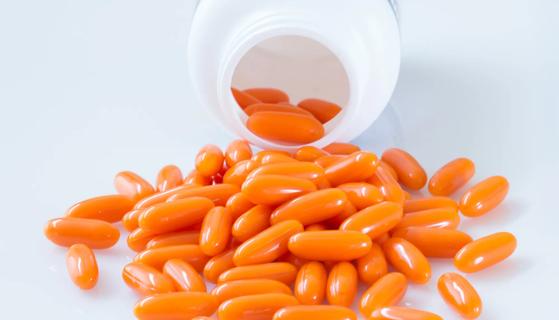Lifestyle adjustments can help you raise your HDL, the ‘good’ cholesterol

Just saying the word “cholesterol” can make brows furrow and faces crease with worry. Given cholesterol’s connection to heart attacks and stroke, this waxy type of fat in your body carries a well-deserved bad reputation.
Advertisement
Cleveland Clinic is a non-profit academic medical center. Advertising on our site helps support our mission. We do not endorse non-Cleveland Clinic products or services. Policy
Nobody wants high cholesterol, also known as hyperlipidemia. But there’s a form of cholesterol that’s actually good for you … and you can use that to your advantage.
High-density lipoprotein (HDL) is one of two types of cholesterol you’ll find on lipid panel test results that screen for your risk of cardiovascular disease. The other is low-density lipoprotein (LDL).
“Think of HDL as the good, or helpful, cholesterol,” says cardiovascular medicine specialist Leslie Cho, MD. LDL, meanwhile, is the “lousy and less desirable” cholesterol.
So, we want HDL high and LDL low. That’s easy enough to remember! But how high and how low, exactly?
To keep your system running at optimal levels, you want to keep your HDL high. Ideally, that’s 50 milligrams per deciliter of blood or higher. (The normal range is 40 to 59 mg per deciliter.) When HDL levels dip below 40 mg per deciliter, your risk of heart disease rises.
It’s also critical to keep your LDL low — ideally, under 100 — from an early age, given the accumulating damage caused by bad cholesterol. A study published in 2020 shows the increased risk that comes with long-term high levels.
“Although medications can increase HDL cholesterol, research has shown they do not necessarily alter your risk of heart disease. So, we often focus on suggesting lifestyle changes that can boost HDL levels and reduce your LDL,” says Dr. Cho.
Advertisement
Here are ways to do that, according to recommendations from the American College of Cardiology and the American Heart Association.
The food you eat can help drive your cholesterol levels down, says Dr. Cho. Trademarks of a heart-healthy diet include:
Eating heart-healthy foods is important. So is ensuring that the not-so-healthy stuff only makes an occasional guest appearance on your plate. Animal fats and other saturated fats can send cholesterol levels soaring. That means it’s a good idea to limit your intake of:
The Mediterranean diet and DASH diet are two eating plans noted for their heart-healthy approach to food.
Physical activity builds more than muscle. It can also increase HDL levels, shares Dr. Cho.
Numerous studies show that moderate- to high-intensity exercise can boost your all-important HDL numbers. As an added bonus, working out also pushes your LDL numbers down.
You can work on your fitness however you desire. Try walking or running. If cycling is more your thing, hop on a bike. Or try swimming or yoga or weight training or … well, you get the picture. Even gardening can fit the bill. If you have a medical condition that makes traditional exercises tough, talk with your provider about alternatives and adaptations.
Long term, you should be shooting for at least 150 minutes of moderate-intensity physical activity per week, or 75 minutes per week of vigorous-intensity activity. If that feels ambitious — or, frankly, impossible — start slow and build up the time and intensity gradually. Even a little bit of extra activity can make a big difference.
You’ve probably heard that carrying extra pounds tends to increase LDL levels and push down your HDL count. In many cases, that’s true. But the relationship between weight and heart health is complicated. Not all people with overweight or obesity have high cholesterol, and there are plenty of people with BMIs in the normal range who have hyperlipidemia. We’re learning more about the reasons why every day. For example, we now know that some people’s genetic codes disconnect overweight and obesity from conditions like high cholesterol that we typically associate with heart disease.
Advertisement
Work with your provider to determine if your current weight is heart-healthy in light of your specific medical history. If weight loss is the right choice for you, there’s good news: It doesn’t take much to see a measurable difference in your cholesterol. In fact, the American Heart Association says that a weight loss of just 5% to 10% can improve both your HDL and your LDL numbers.
Add high cholesterol levels to the list of negative consequences from lighting up. Smoking and vaping drive down HDL levels while increasing your risk of coronary disease, high blood pressure and diabetes.
The good news? Quitting smoking brings rapid results: Research shows that HDL numbers typically rise fewer than three weeks after you snuff out that last cigarette.
Cholesterol issues often go hand-in-hand with high blood sugar (Type 2 diabetes) and high blood pressure (hypertension). A healthy diet, regular exercise and weight management are all key to maintaining — or improving — your health.
If you’re struggling to make needed lifestyle changes, speak with a provider. They can refer you to other specialists and connect you with additional resources. If healthy habits aren’t doing the trick, that’s another good reason to dial the doctor. You may be a good candidate for medication or other treatments.
Advertisement
High cholesterol often doesn’t announce itself. That’s why you should have it checked through a blood test (lipid panel) at least every four to six years, according to the U.S. Centers for Disease Control and Prevention (CDC). Testing should be more frequent if you or your biological relatives have a history of heart disease or diabetes.
It’s not just adults who should be tested either. The CDC also recommends that children have their cholesterol checked at least once between ages 9 and 11. The agency also recommends a test between ages 17 and 21.
Test results can open discussions with your doctor about unique risk enhancers such as:
“Improving your cholesterol begins by knowing there’s an issue,” says Dr. Cho. “Getting lipid panel test results can help guide you toward lifestyle adjustments and potential treatments that can improve good cholesterol and lower the bad.”
Advertisement
Learn more about our editorial process.
Advertisement

Medications known as statins can lower cholesterol levels to minimize the risk of blocked arteries

Fatty fish, flaxseed, extra virgin olive oil and nuts may help raise your HDL number

Grapefruit contains natural chemical compounds that can interfere with certain medications when it’s consumed in large amounts

Up to 30% of people who take the cholesterol-lowering medication feel aches and soreness

There’s not enough evidence to show that this supplement has any effect on muscle aches from cholesterol-lowering meds

There’s no limit on the amount you should have each day, but experts are focused on saturated fat

Statin use has been associated with weight gain but the reasons aren’t clear — and the benefits of statins far outweigh the risks

Some statins have been shown to slightly increase your risk of diabetes — but that shouldn’t keep you from taking the medication you need

Start having sex about 72 hours before ovulation, then at least every other day during your fertile window

Attachment theory suggests that your earliest relationships shape connections throughout your life

It isn’t a recognized mental health disorder, but research shows that problematic social media use can negatively affect your mental health, self-esteem and sleep